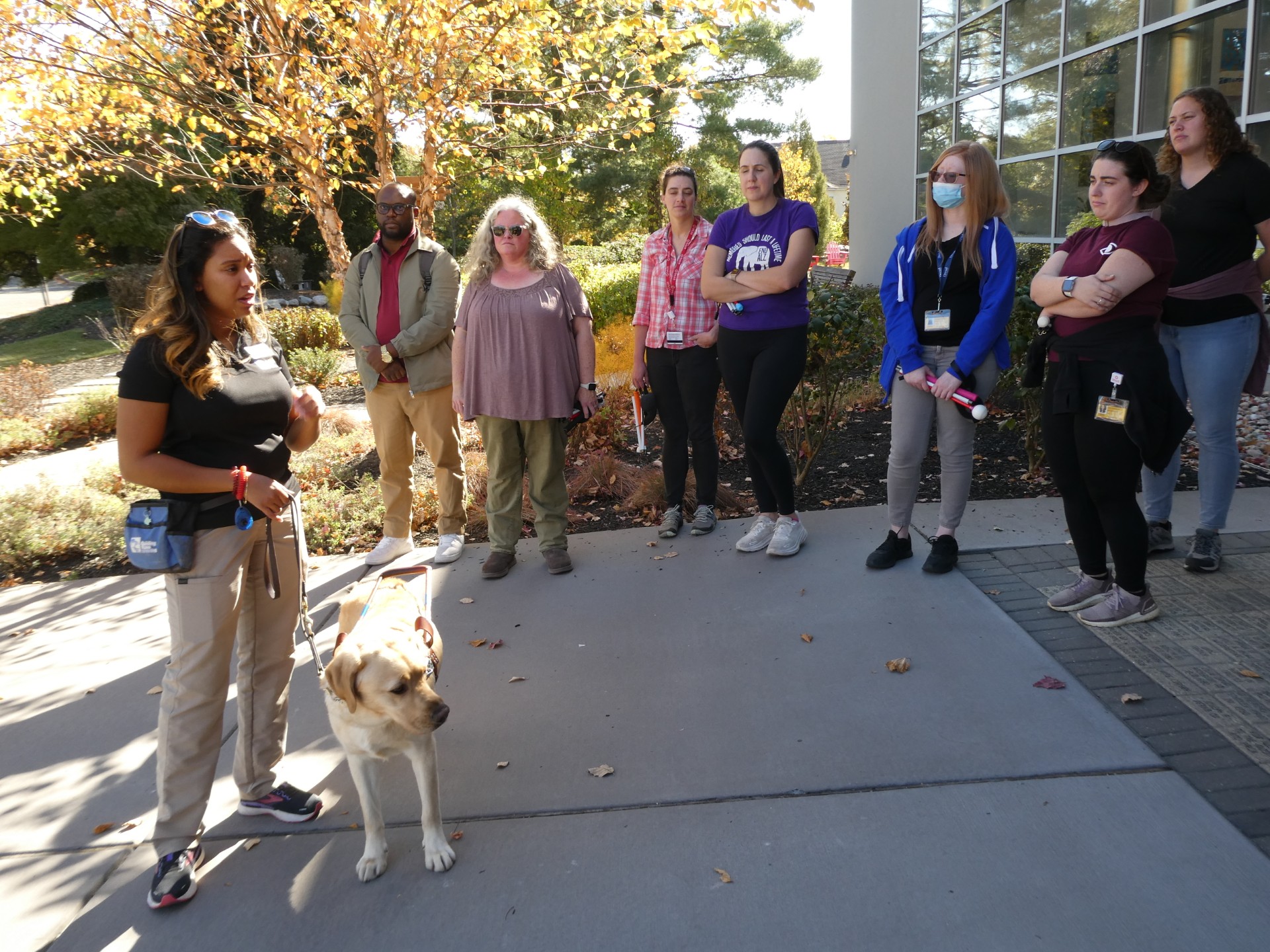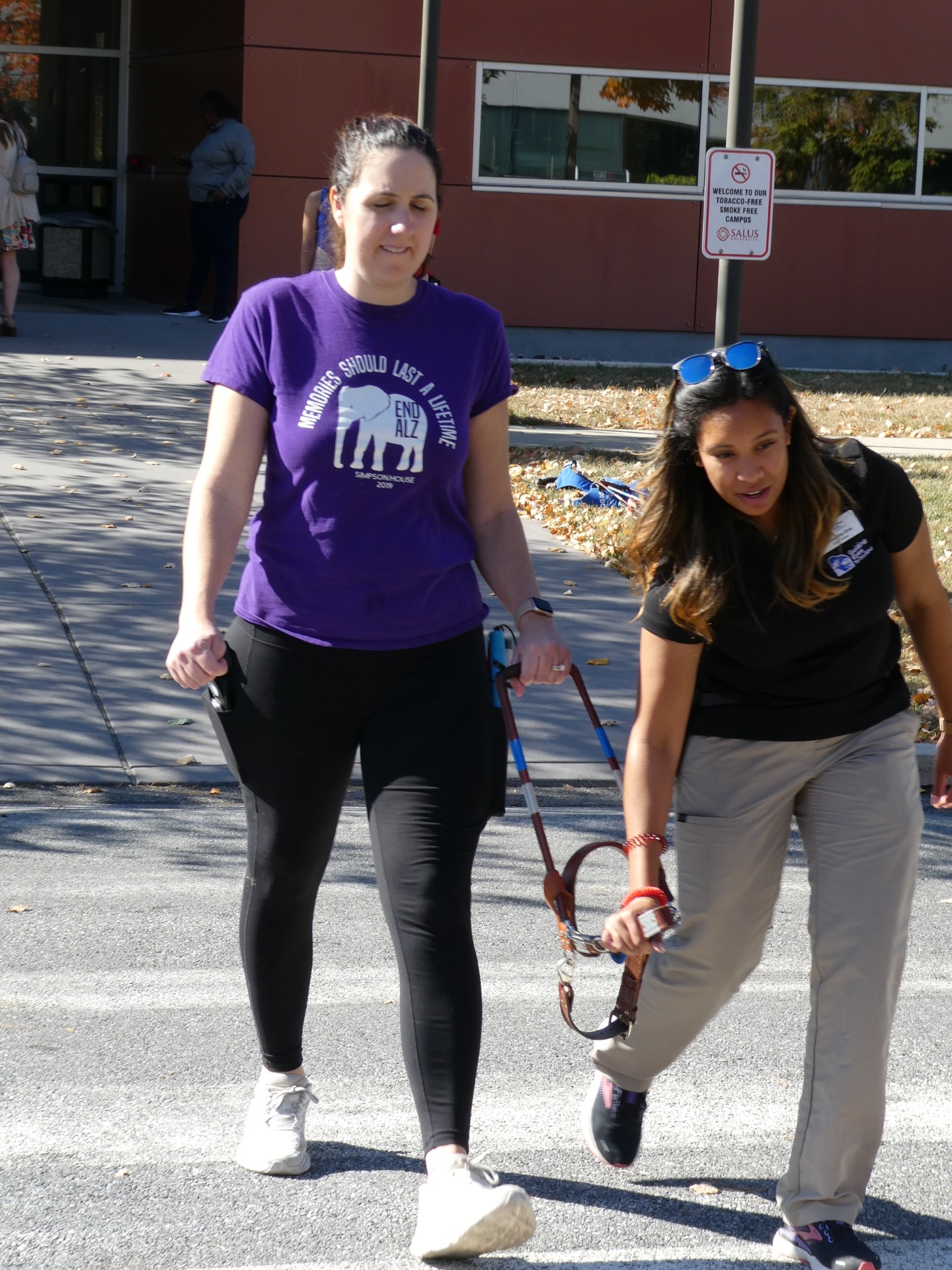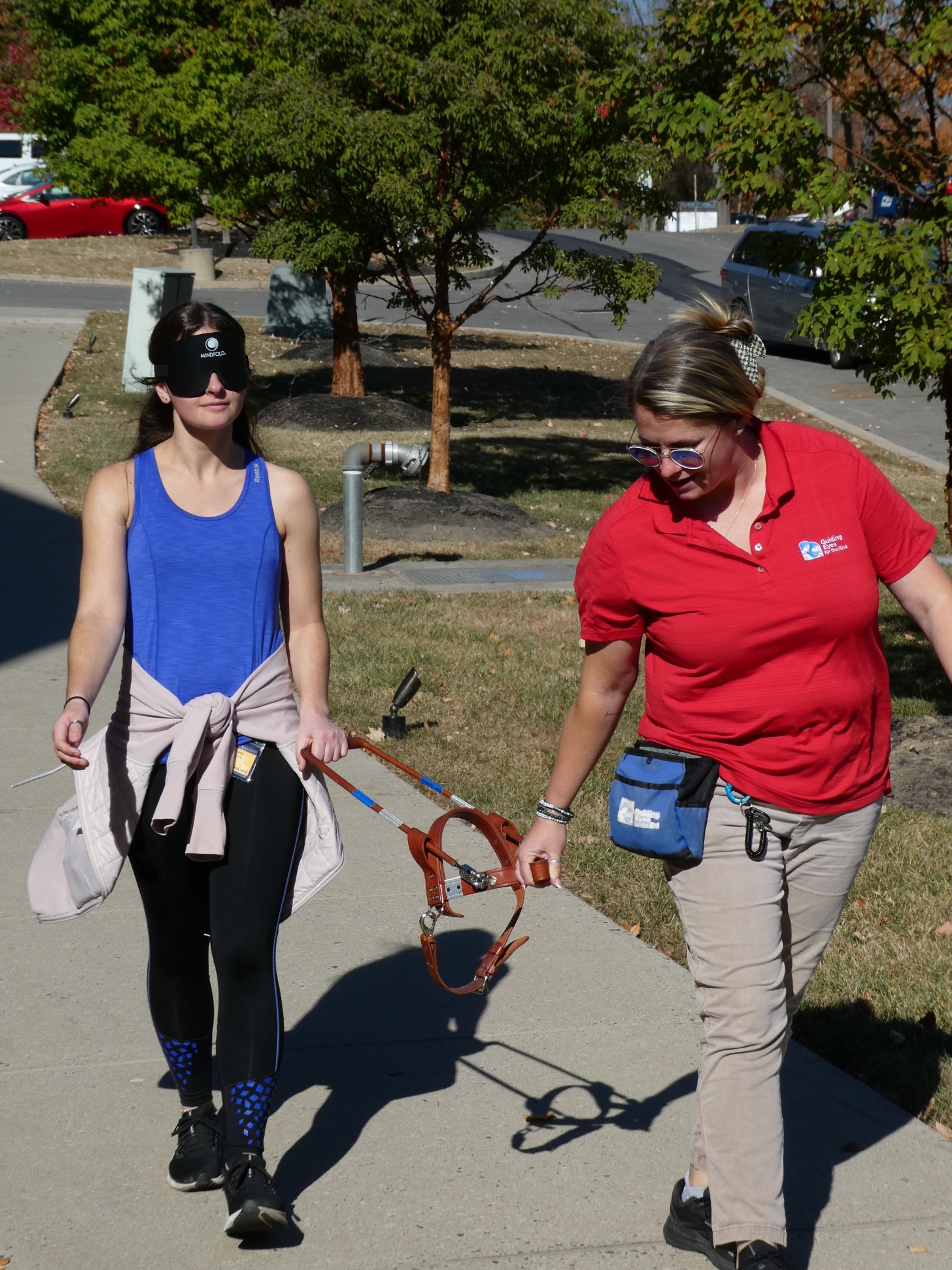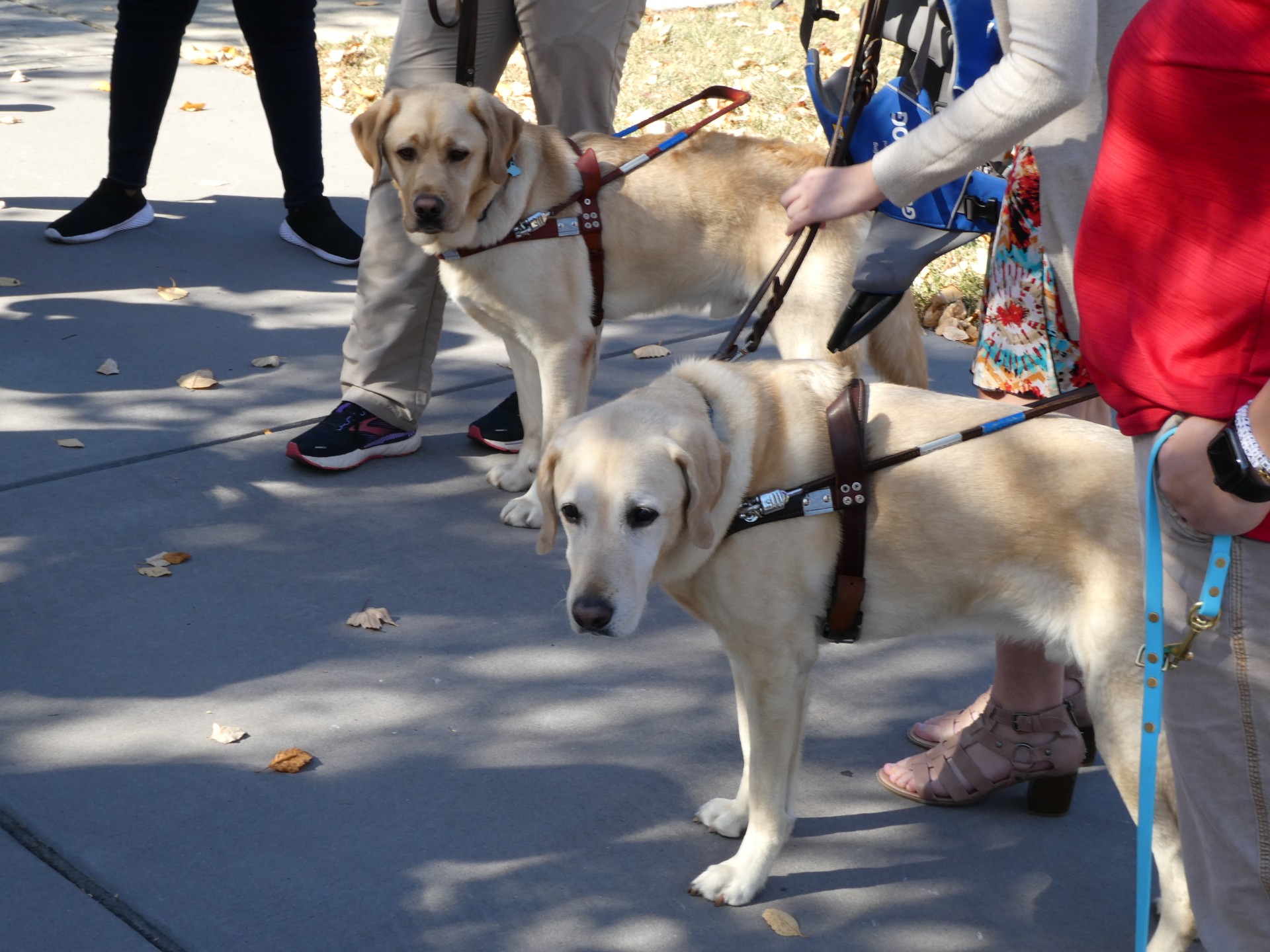
During her first experience with a guide dog, Christine Brennan ‘25O&M didn’t realize the strength of the dogs.
“The dog pulls so you have to provide some strength to maintain a good alignment,” said Brennan.
 That was just one of the nuances about working with a guide dog Orientation and Mobility (O&M) students at Salus at Drexel University learned recently during a week filled with hands-on training. As part of the hybrid program, students are physically on the Elkins Park, Pennsylvania, campus for an eight-week summer residency, and then again for a week in the fall. In addition to guide dog training, the students learned best practices in map-making, technology for orientation and mobility, and intersection accessibility, among other topics.
That was just one of the nuances about working with a guide dog Orientation and Mobility (O&M) students at Salus at Drexel University learned recently during a week filled with hands-on training. As part of the hybrid program, students are physically on the Elkins Park, Pennsylvania, campus for an eight-week summer residency, and then again for a week in the fall. In addition to guide dog training, the students learned best practices in map-making, technology for orientation and mobility, and intersection accessibility, among other topics.
“The beauty of it is that they get to experience what it feels like to walk with a guide dog,” said Fabiana Perla, EdD, COMS, CLVT, chair of the department of Blindness and Low Vision (BLVS), Salus/Drexel. “They’re all familiar with what walking with a cane feels like. But by having that first-hand experience, they can better educate their clients and identify a potential good candidate for a guide dog. They understand the benefits, but also the challenges involved with either way of traveling.”
Guiding Eyes for the Blind, based in New York, has been providing specialized training to students in the Department of Blindness and Low Vision Studies (BLVS) for several years. This year's canine training crew included a two-year-old black Labrador named Tanya and two blonde Labradors, 10-year-old Aron and two-year-old Fozzie.
Brennan along with her classmates practiced crossing the street blindfolded, initially being guided by the dogs’ trainers to simulate the experience before working directly with the dogs.
 “I got to feel what it was like to hold a harness and what the pull was like,” said Brennan. “I learned what it meant when the dog stops. And, how to give them cues and positive reinforcement to help me navigate safely.”
“I got to feel what it was like to hold a harness and what the pull was like,” said Brennan. “I learned what it meant when the dog stops. And, how to give them cues and positive reinforcement to help me navigate safely.”
The entire O&M experience is a new direction for Brennan. Currently, she’s an occupational therapist assistant at a preschool, where she worked with O&M specialists. She learned more about the profession, loved what O&M specialists do, and decided to make a career change.
She chose the Salus O&M program because it’s one of the best in the country. Programs in Blindness and Low Vision (BLVS) Studies, which includes Orientation and Mobility (O&M), Low Vision Rehabilitation (LVR), Vision Rehabilitation Therapy (VRT) and Teachers of Students with Visual Impairment (TVI), were first developed at the Pennsylvania College of Optometry (PCO) in 1983, making PCO/Salus the first institution in the country to offer four master’s degrees and certificates in those professions.
“So many people went to Salus and they have such good things to say,” said Brennan. “In this field, based on what I’ve learned here, I’m feeling prepared to be a great professional.”
